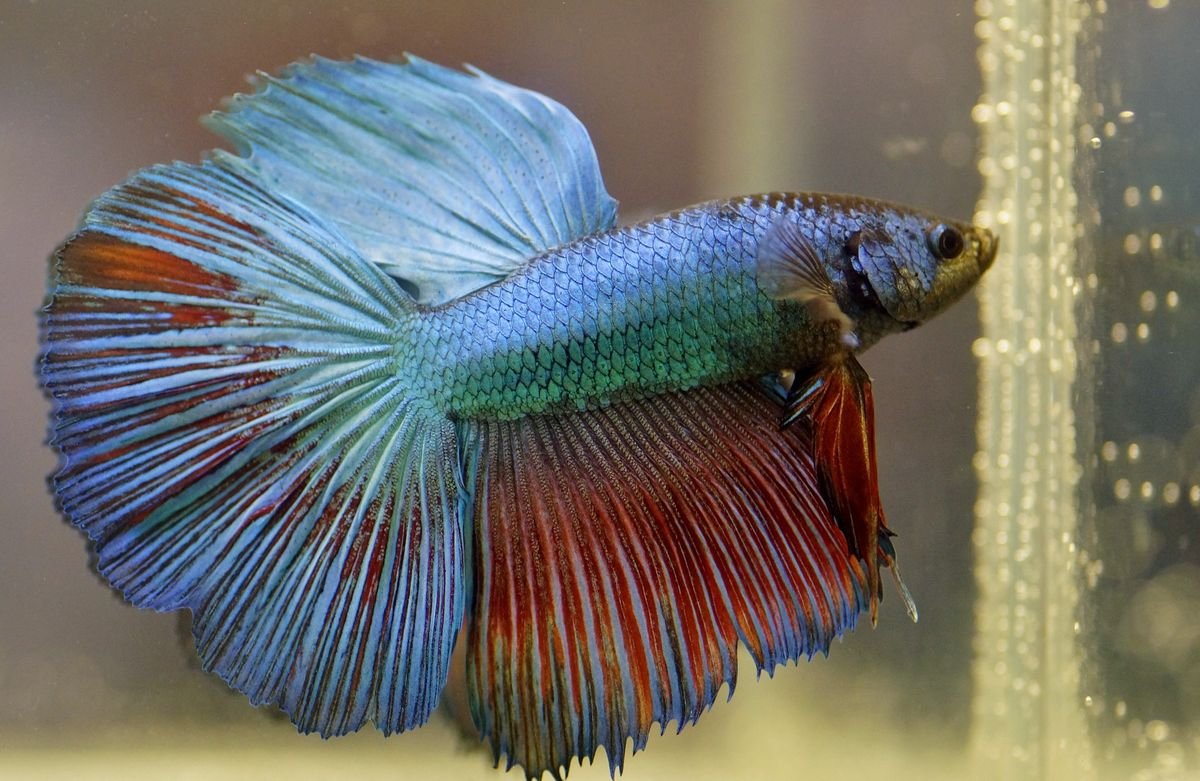This Guide to Betta Fish Diseases can help you identify different illnesses your fish might go through and treat them as soon and effectively as possible. Different diseases can stem from a variety of causes, such as fungal, viral, bacterial or parasitic. However, many of them have simple and easy treatment if you can correctly identify what it is.
Betta Fish Diseases, Symptoms and Treatment Comparison Table
| Title | Cause | Symptoms | Treatment |
|---|---|---|---|
| White Spot (Ick) | Parasite | Small white spots on body | Raise water temperature, Medication |
| Hole-in-the-head | Parasite | Pale ulcerated area around head | Vit. C foods, Medication |
| Skin & Gill Flukes | Parasite | Labored breathing, Rubbing against objects, Abnormal breathing | Medication |
| Anchor Worm | Parasite | Visible parasites attached to body leading to ulceration & irritation, Damaged gills (breathing probs) | Remove parasite with forceps, Medicated bath to prevent secondary infection, Insecticide, Permanganate "dip" |
| Velvet Disease | Parasite | Golden dots on body, Rubbing against rocks, Dusty brownish body color | Raise water temperature, Dim lights, Aquarium salt treatment, Copper sulphate treatment |
| Saprolegnia | Fungal | Whitish fur-like growths, Pink/white external body bumps | Vit. C foods, Medicinal bath, Salt treatment, Methylene Blue |
| Lymphocy Stitis | Viral (contact) | Cauliflower-like growths & white areas around eyes | No treatment/cure, Quarantine all new fish to prevent |
| Septicemia | Viral (contact) | Hemorrhaging internally and externally (eyes, gills, pop-eye, swollen abdomen) | Antibiotic medication (Virtcom) |
| Piscine Tuberculosis | Bacterial | Weight loss (sunken abdomen), Loss of appetite, Papules (small bumps on skin), Discoloration, Bulging eyes | Trim affected fins, Bacterial medication |
| Fin Rot | Bacterial | Fin decay- erosion of edges of fins, Red marks | Improve water quality, Remove fish that nip fins, Vit. C foods, Antifungal to prevent secondary infections |
| Columnaris (Mouth 'Fungus' or Cotton Mouth) | Bacterial | Cottony growth near mouth, Loss of appetite, Loss of sheen | Improve water quality, Antibiotic medication |
| Swim Bladder | May be Bacterial | Inability to balance in water | Check water temperature, Medicinal bath |
| Vibrosis (Red Boil) | Bacterial | Discoloration, Reddish staining of fins, Bulging eyes, Lethargic, Ulcers | Medicated food |
| Psendomoniasis Septicemia | Bacterial | Hemorrhages in mouth & ulceration on body | Medicated food |
| Chlorine Poisoning | Chemical | Restlessness, Inflamed gills, Trouble swimming, Incorrect body positioning, Sudden death | Remove fish from water, Water treatment to rid chlorine (boil it, at water conditioner) |
| Ammonia Poisoning | Pollutant (decomposition of organic matter causing imbalance to the nitrogen cycle) | Increased mucus production, Red bleeding gills, Body color darkens | Remove fish from polluted water, Water change, Biological bacterial treatment |
| Dropsy (condition, rather than a disease) | May be caused by any number of diseases | Build-up of body fluid causing bloating and protruding scales | Treatment of the disease causing the condition |
Betta Fish Medication Comparison Table
 Top Top | Heals damaged fins & skin, Bacterial infections, contains melaleuca | View on AMAZON | |
 Top Top | Anti-fungal, Internal & external infections | View on AMAZON | |
 Top Top | Parasitic disease (gill, & skin flukes), Swolen abdomen, Hole-in-head, Wasting disease | View on AMAZON | |
 Top Top | Treats most diseases- Ick, Fungus, Mouth rot, Use as a preventative | View on AMAZON | |
| Fungal Infections | View on AMAZON | ||
 Top Top | Fungal & Bacterial- Dropsy, Popeye, Fin/tail rot, Septicaemia; Treats internal when food is refused | View on AMAZON | |
 Top Top | Nematodes, Roundworm, Nodular worm, Hookworm | View on AMAZON | |
 Top Top | Micro-bacterial starter- Establishes nitrifying bacteria. This cylces your tank and reduces ammonia and nitrates | View on AMAZON |
Complete Guide to Betta Fish Diseases and Treatment (with pictures)
Betta fish, also called Siamese Fighting Fish, tend to thrive in simple but well-equipped tanks, usually filled with various plants and decor to hide in. Most betta, when not well, have symptoms that clearly indicate it may be sick, such as droopy fins, lethargic swimming and dulled colors.
It’s important to understand these symptoms so you may be able to care for them as soon as there’s a hint that they may have fallen ill.
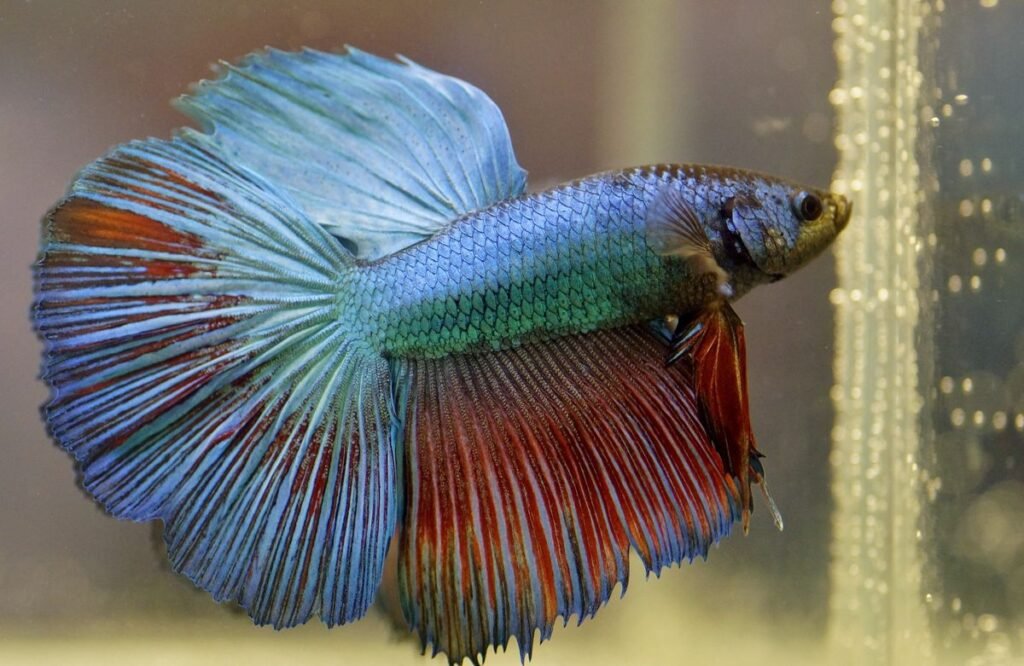
Fungal Diseases in Betta Fish
True fungal infections in betta fish are less common than parasitic or bacterial infections.
In general, they usually appear as white cottony growths on fish; like white sheets of fuzz, white lumps or white dusty slime. They can also be internal, and in a lot of cases, fatal if not treated properly.
Fungal outbreaks can follow other bacterial or parasite illnesses where the fishes body has open wounds and a weakened immune system.
Fungal diseases are most commonly brought on by poor water quality, infected food or open wounds. Therefore, such diseases can be prevented by keeping a clean aquarium environment and avoiding infected injuries.
Antibiotics like Methylene Blue and Clear Fungus are effective at removing fungal diseases on fish.

Fin and Tail Rot
Fin rot can be the result of a bacterial infection or of a fungal infection, where a betta’s fins and tail begin to decay and rot away. The fins may also develop a white layer on the surface if it’s a fungal infection.
This common condition isn’t fatal if treated early and fins will eventually grow back, though they may not be as vibrant or long as they were before.
Fin rot may be caused by poor water quality, a poor diet or damage caused by other fish nipping your betta’s fins.
Treatment can include a quality diet high in Vitamin C, along with drastically improving water quality in terms of it’s pH, temperature and various pollutants like ammonia.
Your betta can also be treated with an antifungal medication to prevent secondary infections. For example, Hikari revive is an effective prescription of 5 days, with clear instructions for its use.
It’s also recommended to remove fish that like to nip at the long fins of betta fish, or any sharp artificial plants or ornaments that could also tear fins.
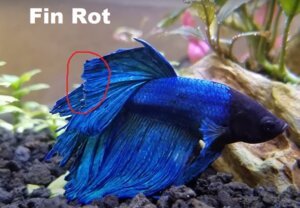
Water Mold
Another common fungal illness is Saprolegnia. This is a water mold domycede infection, also known as oomycete infection, or winter kill.
Water mold shows up as whitish fur-like growths and/or pink or white external body bumps.
Foods rich in Vitamin C, salt treatments and medicinal baths with Methylene Blue are all recommended treatments. Ensure your betta is in a high water quality environment and the tank is kept at the optimal temperature.
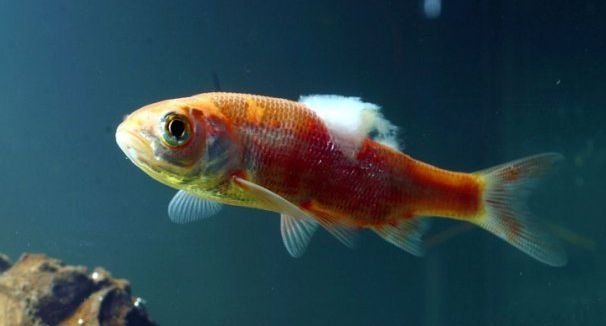
Bacterial Infections in Bettas
Bacterial infections manifest in many ways and are often associated with poor water quality, fish stress, or contaminated food. Common signs include cloudy eyes, a white film on the Betta’s body or fins, tattered fins, and hemorrhaging (bloody patches) or open sores (ulcers) on the mouth and body. The fish may be listless sitting on the bottom of the tank.
Columnaris (Mouth ‘Fungus’)
Columnaris, are bacterial diseases that can cause a fin to rip or flake. It appears as a pale patchy sheen on the fishes body.
It also causes skin ulcers or unexplained lesions, yellow spots or marks on the face, sometimes resembling a cotton growth near mouth.
The fish is prone to breathing difficulties because of this condition and its damage to the gills. If you don’t treat the infected fish it dies within 72 hours.
The disease could easily be prevented by treating open wounds and fungal infections in aquariums.
Columnaris can be treated with tetracycline and anti-biotics containing sulfa 4 TMP SulfA and triple sulfa. It’s also possible to prevent this issue by ensuring the water is optimal in the tank (free from ammonia, PH in correct balance and correct temperature for Betta fish.
This is a bacterial illness which causes white circles around the mouth and lips of fish. It is often prevented by keeping water clean and clogged. It will cure mouth fever when antibiotics are used.
Others medicines used to treat fish fungus can also help treat the infection. The infected fish can’t survive if sickness doesn’t get dealt with early enough so the diagnosis may have to be delayed.
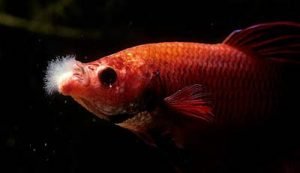
Columnaria is very contagious so you need to remove and incubate infected Bettafish.
The diseases may be internal but the most often externally occur on Betta. There is a slow and a fast form of this infection so depending on the one your Betta had this will determine how likely it was to overcome the illness. To prevent this disease, maintain good water quality and disinfect all equipment before entering the tank.
As an precaution ensure a high water level and disinfect the equipment at the entrance to the tank while keeping the water safe from the bacteria and other viruses in the. The disease is sometimes found in fish caught before.
It is easy to confuse Columnaris with a Fungal disease called Saprolegnia. They look similar, but require quite different treatments. Saprolegnia presents itself with patchy white (or cotton wool look) on the dying tissues of the fish, whilst Columnaris appears more as a patchy sheen on living tissue.
Columnaris is treated by using an antibiotic or a copper sulfate. To treat Columnaris you must remove the bacterial infection from its whole tank, changing the tank water, vacuuming gravel and adding aquarium salt. After cleaning the tanks you can.
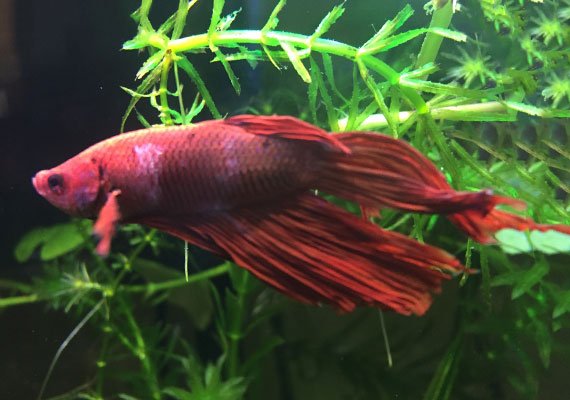
Bacterial Septicemia
Bacteria septicomy is the less common fish illness caused by Pseudomonas or Streptococcus bacteria. It is a serious condition, that if not treated early will result in death.
Symptoms show up as hemorrhages in the mouth and ulceration of the body.
Treat the condition with a medicated food.
Velvet
Velvet disease is caused by a protozoan parasite. Other names for the condition are: Coral Disease, Gold Dust Disease or Rust Disease.
Symptoms show up as many tiny golden dots covering the fishes body, giving the appearance of ‘rust’. The fish will be agitated, rubbing itself against rocks and plants.
Treat the illness by raising the temperature of the water, dim the lights and apply aquarium salt to the tank. In addition, treat with copper sulphate for ten days.
Aquarium Pharmaceuticals Bettafix medication is useful treatment for many other diseases and ailments. It can cure many of.
The fish infected with velvet appear have a rusty face and tanned head including skin glands and belly and it may have black spots all over the skin caused.
If the velvet has been decontaminated before too long it can be fatal.
The parasitic disease could be prevented by improving the quality of water and making the conditions comfortable. I’ve lived with betta for the past 10 or 13 and saw this remedy help to heal our aquatic pets’ injuries.
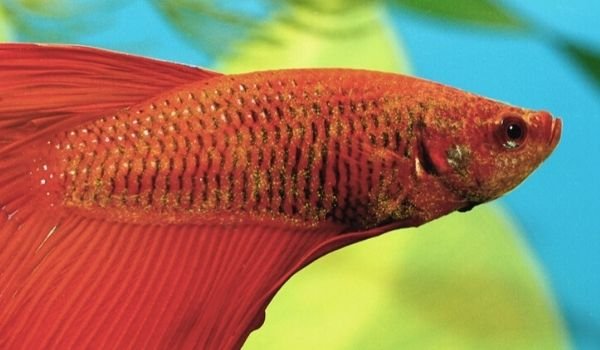
Dropsy
Dropsy is a condition rather than a Betta fish disease. Build-up of fluid in the body causing bloating and protruding scales can indicate a number of sicknesses including bacterial infections, liver disfunction and parasites.
Swollen belly lining and the swollen belly are caused by accumulation of internal fat.
Infections can occur if you get one of them for medical reasons. Symptoms usually present are white scales and sunken eyes.
There is no known cure for dropsy but medication such as Betta Revive can help with the illness.
Most fish that can be at risk for dropsy don’t survive and most are die of infections. The bacterial infection can be avoided by keeping the aquarium free and by feeding fish with vitamins rich foods such as vitamin rich fish. Dropsy is a bacterial infection with effects on the kidney systems and its cause.
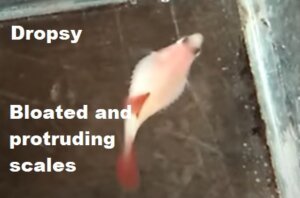
Swim Bladder Disorder
Pool bladder disorder is due to constrictions, poor water conditions parasites or bacteria and increased organ space (oesophagia).
Fish that have an irregular bladder can also lay at the bottom of the tank and flop out sideways or upside-down in the water.
It can be controlled by maintaining high quality water, avoiding overstocking and providing the fish with the correct amount of fresh and fiber-rich foods.
The treatment can end by raising water temperature, letting the fish fast for a few days and then feeding with cooked peas. Medicinal baths also help to treat the disease.

Hemorrhagic
Hemorrhagic symptoms include bleeding to the face and mouth of the fish, as well as pop-eye and a swollen abdomen. The infection is treatable thus the death is very low.
A diluted solution could prevent salmonella infection by killing Yersinia ruckeri bacteria which causes the diseases.
The treatment of hemorrhagic may include the use of antibiotics such as ampicillin. The disease’s fatality is small.
Hemorrhaging is also a symptom of Septicemia, treatable with an antibiotic medication.
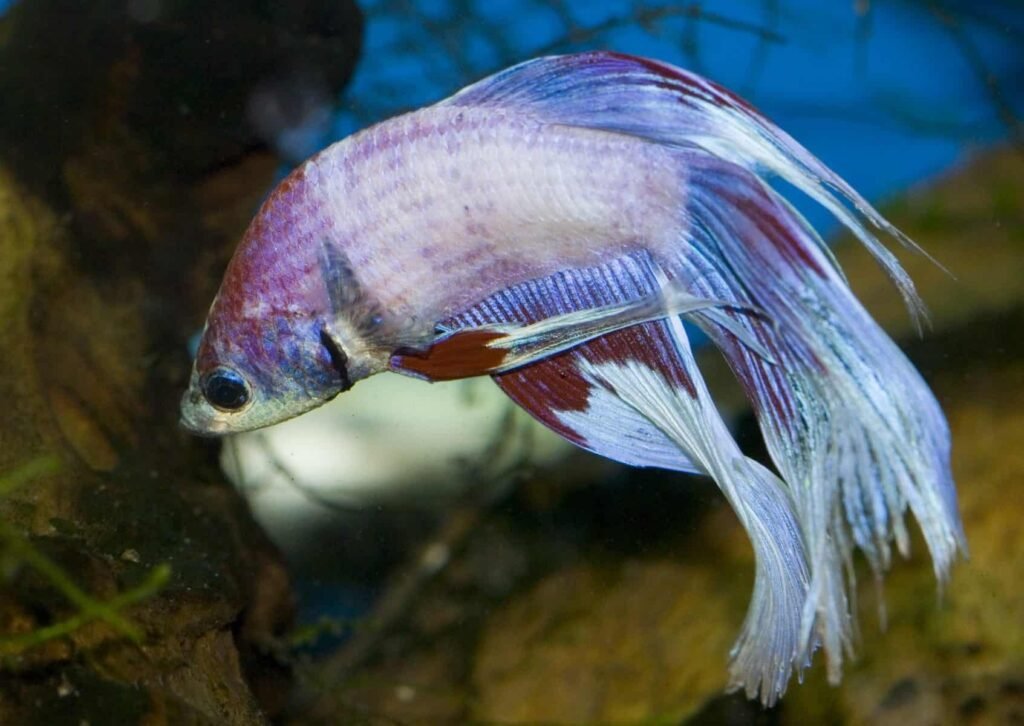
Pop Eye
Pop eye is often a sign of a health-related bacterial infection such as Vibrosis (Red Boil) or Piscine Tuberculosis.
Bacterial infections that lead to Pop-eye can be avoided by prevent infection in the aquarium.
Quarantining new fish before placing them in the main aquarium.
Alternatively Pop-eye is one of the possible symptoms of Septicemia, a viral illness. Antibiotic drugs such as Tetracyclines may treat this illness.

Cloudy Eye
Poor water quality (particularly when PH drops) often leads to cloudy eye in Bettas, either directly or indirectly, generally due to a weakened immune system. In addition, internal parasites, such as protozoa or flukes can lead to the condition
The bacteria is found to cause a white film covering the eyes. It can be treated with antibiotics including Metafix and Fungus Clear.
Providing clean water and a healthy diet are the best treatments for Cloudy Eye. Salt treatment or medication with an antibiotic are other helpful treatments.
This type of bacteria illness is not fatal, but may impede vision.
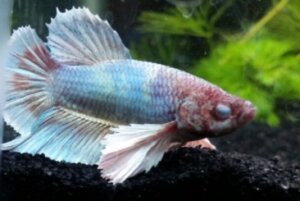
Parasitic Illness with Betta Fish
Symptoms indicating that your fish has a parasite infestation include: clamped or droopy fins, loss of weight, there may be white spots on the skin or gills or you’ll notice your Betta trying to rub against aquatic plants or ornaments in the tank. Some Betta fish appear bloated.
Most parasitic diseases in Bettas occur as a result of poor water quality.
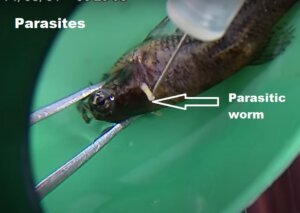
Hole in the head
Hole-in-the-head disease shows up as pale ulcerated areas around the head. It isn’t a disease common in Bettas.
The fish which have been infected usually dies after several days in cases where it was not treated adequately earlier.
Treatment with Vitamin C enriched food and a parasite medication such as Parasitic Clear.
Anchor Worms
Anchor worms are parasitic worms that attach to the fish’s body leading to ulcerations. They are a devilish parasite from the Lernaea species (actually a type of crustacean, not worm) that embed their anchor-shaped heads into the scales and flesh of their host fish.
The parasites are visible to the naked eye as they protrude from between the Betta’s scales. Fish will show signs of irritation and its gills may be damaged (showing breathing difficulties).
Treat infected fish by physically removing the parasites with forceps. Then give the fish a medicated bath to prevent secondary infection. Using an insecticide medication or a potassium permanganate ‘dip’ will also rid the fish of these paracites.
Anchor Worm is prevented by treating all newly infected fish and keeping the water clean. A condition that is diagnosed untreated can become fatal.

Ich
Ich, a parasitic disease also known as White Spot, causes small white spots to cover the fish’s body. The fish will be irritated and may rub itself on rocks and plants.
The sickness can be treated by raising the water temperature slightly and using a parasite medication such as Ich-X which gives excellent improvement within a week.
It is preventable by changing and conditioning of water regularly.
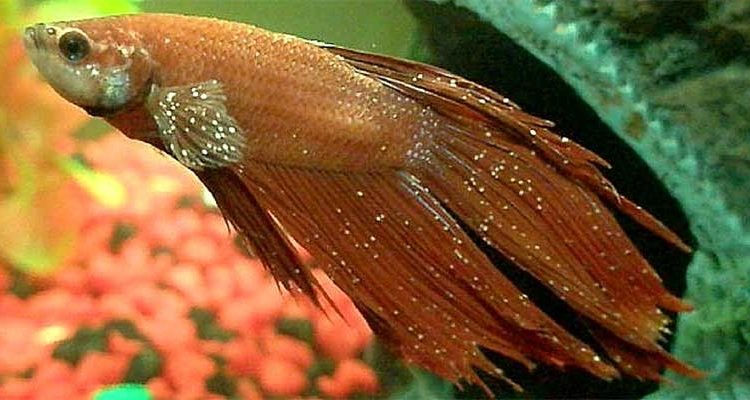
Viral Infections
Viral infections are common in Betta fish, but they can affect all aquarium fish. There are no known treatments or cures for viral infections. Fish that are suspected of having a viral infection should be removed from the fish aquarium straight away to prevent spreading to other fish.
Betta Tumors
Bette tumors are usually cancer – lumps growth or minor bumps/cysts that show up underneath a fish skin.
They mainly affected reproductive organs, gills, tail and waist.
The tumors can be controlled by feeding the fish a clean tank, maintaining a healthy diet, treating any other infections or by keeping carcinogenic elements away from the tank. T
he benign tumours and cysts can be treated in several ways depending on the cause of the lump or bump. These malignant tumors are hard to cure but simple surgical procedures can aid.
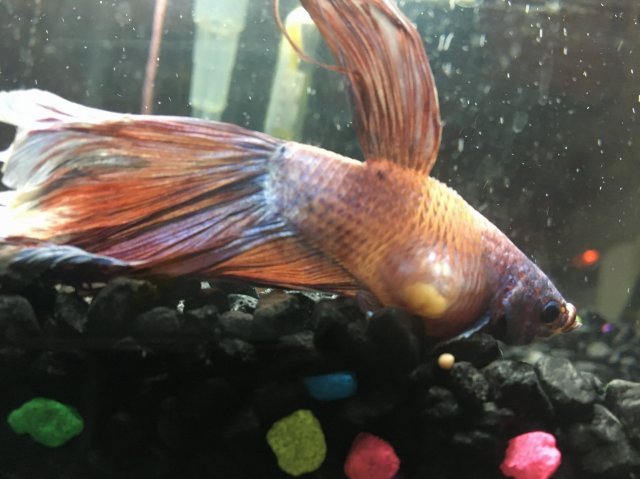
Betta Fish Chemical Poisoning
Ammonia Poisoning
A build up of ammonia in the aquarium can lead Bettas becoming sick. Decomposition of organic matter (fish wastes, excess food and nutrients) in the water increases the likelihood of a toxic level of ammonia.
In a well cycled aquarium, where a healthy population of beneficial nitrogen consuming bacteria live, ammonia levels will always be in check. However, if this balance is upset nitrates in the water build up leading to the water being polluted.
Symptoms of ammonia poisoning in Betta fish include: an increase in body mucous production. Gills will be inflamed red and may bleed and the fishes overall body color will darken. Sometimes the fish will appear agitated or distressed.
Chlorine Poisoning
Tap water in many countries contains chlorine which is put into the water to kill pathogens. Chlorine is toxic to Betta fish and will cause death if the fish is left in the chlorinated water for too long.
Water added to an aquarium from the household tap must be treated first to remove the chlorine. There are commercial chlorine treatment products that can be bought that will do the job.
Alternatively, fill your tank and run the filters, allowing it to cycle for a few days. The chlorine will dissipate. To speed the process up, you can boil the water to remove the chlorine.
Symptoms of chlorine poisoning include restlessness and erratic behaviour– such as shooting around the tank and jumping. The fish may have trouble swimming and show incorrect body positioning. Its gills will be inflamed.
It is important to remove the fish from the tank and place it in healthy water. If the damage to the fishes gills is minimal, it will likely recover.
Isolate sick fish immediately
If your betta shares its tank with other fish or aquatic creatures, immediately move him towards the quarantine or hospital tank. That last thing should be to expose other tank participants to risking an aquatic illness.
It is also not a necessity or a waste to medicate healthy fish. So drop it into your hospital tank to a separate tank where you will only medicate the sick or injured fish then give yourself another chance to recover. Whenever someone sickens him you need to treat her properly.
Sick Betta Fish Behavior
Some patterns of behavior are correlated with a stressed or sick betta fish and yet not necessarily fully contracted disease. However. This behavior can give you the most accurate and quick diagnosis of when your fish is sick. This behavior and correcting its errors early are important. Attempting to control the problem could increase risks from an outbreak and eventually cause more serious problems.
Betta Fish Diseases
After diagnosis you can now follow the treatment options. Never stop treatment early as it can increase parasitic immunity. If your betta fish lives in solitude you may choose to keep them in the tanks they already contain. If they survive in a community tank you may quarantine them in separate hospitals as a disease-treated tank to treat them. List some famous Betta infections listed below… Infection b. tinnitis is commonly inherited.
Sick Betta Fish signs
If any of these things is unusual or even when parts of their body or fins look unusual to you, trust your instincts. Remember that treating in the early stages of any condition will most likely lead to good outcomes. You have sick fish at hand. If you notice any sign of either any betta fish diseases or any more you may have a disease to contend against that can lead us to a disease.
Keep a First Aid Kit – Hope for the best prepare for the worst
Keeping a first aid kit ready can be a very useful thing for any fish owner. That should be treated as an essential kit for routine care of the fish. Do you or something in your family need medical attention for a sick or injured person? Why would you wait till they are sick on your fish before finding a drug when they might really need them? Let us ask.
A note on preventative medicines
Your aquarium waters are always full of good bacteria with most of it being beneficial. Even harmful bacteria won’t hurt your fish unless their immune system is well developed. By using antibacterial medicine when there are no visible indications of infection, you may end up hurting the good or poor bacteria and giving them the chance to adapt to change. Your best bet is practicing good aquaculture maintenance because diseases have no effect on fish unless they get good care. Good aquaculture keeps should be practicing good care. Keeping fish healthy is the only solution that can prevent disease.
What to put in your Betta First Aid Kit
Ampicillin used for pop-eye and Gram negative infections. Kanamycin – Antibacterial for bacterial disorders. Maracin 1 and 2 – Antibacterial and antiviral medication effective for milder types including frank rot and rhinitis. Jungle infestation Eliminator – fizz forms. Ideal for mouth rot swollen fins that cause fungus and stinging and for eye fog diseases. Works slowly, but remember: dosage appropriately; a full packet is for a 40-gallon tank!
Check water chemistry before treating
Why do you think your mother is unwell? Common toxic substances that form in aquariums creating poorwater conditions are ammonia nitrite and nitrate. Check your water by use of liquid testing tubes. Do a water-change in case you find no unsafe water. The symptoms of poisoning by each potential culprit include vomiting and diarrhea swelling an.
Timing is everything
Some betta illnesses can quickly get worse, leaving few hours of time free for the hunt in the pet food store. Preventing the first stages of illness is probably the easiest path to success. I think therapy should be given if it is difficult.
Questions and Answers
My betta is pale and still alive but is beneath its tank. Very likely that you’re overfeeding him or he’s developed a swim bladder condition. The transparent ring is highly likely fungal, so take one such drug as the Bettafix remedies in that article. You should try cleaning and conditioned the water and maintain the right parameters in water such as pH ammonium nitrite and cadmium. Get me some ways to treat the condition. If she looks sick be careful to monitor it for the next few days to see if she’s going to show any signs of sickness. Does the guy look sick?
Summary
Fin-tail Rot Bacterial/Fungal Clean living conditions Tetracycline/Water-Myxazin Columnaris Bacterial Treat open woulds. Clearfish Fungus Avoid prima e infections. Methylene blue parasite clearance hole in the head Parasitic Keep carbon out in water. Betta Tumors Malignant/Benign give healthy foods surgery/viral medication Betta Revive Pop Eye Bacterial Control other disorders. Faking/Raising water temperature to avoid Overing Fasting/Raising water temperature Betta Remedy/Fishzole Ich Parasitic Change water regularly.
Final Thoughts
Some fish could develop behavior defects like excessive stress, lethargy and poor appetite. Betta fish can suffer from fading colors or abnormal color changes and can develop things like bubbles and solid particles like blobs on their bodies. These conditions could be controlled by regularly changing and conditioning water and by optimizing parameters for ammonia, pH, Nitrite, Nitras, air hardness, water temperature and pressure. Animals showing signs or symptoms of distress should see veterinarian immediately. If you don’t understand why your fish doesn’t work do look through some of the answers listed here.
…

